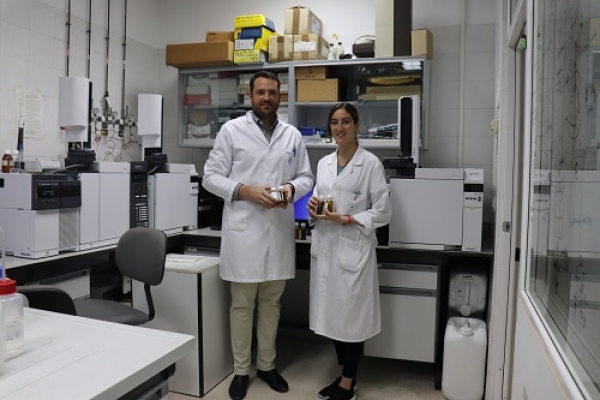Although they constitute less than 2% of the entire composition of olive oil, its minor components, among which phenolic compounds stand out, make the difference when it comes to olive oil quality. They are responsible for giving this product its healthy properties and, due to their antioxidant effect, their daily consumption constitutes a barrier against cardiovascular diseases.
Only virgin or extra virgin oils are rich in these compounds, since the refining process eliminates most of them. The European Union included them on its list of authorized statements of healthy food properties, and allows them on labels, provided that concentrations are greater than 5 mg per 20 g of oil. Hence, the production community is considering promoting the content of these phenols as a quality measurement, and including their amounts and healthy effects on product labels.
Aware of these molecules' effect on health, and the importance they have in marketing strategies for olive oil, the Aristoil project, in which the University of Córdoba participates through the FQM-227 group, has developed a method to quantify these phenolic compounds, in accord with the Health Statement. The objective: to improve the competitiveness of a sector in which Spain is the main producer and that, according to data handled by the Trade Promotion Office of Andalusia (EXTENDA), was recently worth 2.3 billion euros in exports for the region.
The method, which has already been validated in about 2,500 samples, detects these healthy compounds and records the oil samples in a database, with information on their composition and the different factors that have influenced the production process. "The samples come from the producers themselves. They give us information about how they have produced that oil and, in exchange, we analyse it and issue a free certificate indicating the concentration of phenols," explained the principal investigator on the UCO project, Feliciano Priego.
Although the database will continue to grow over the next few years, it has already provided important data on how to obtain oils rich in phenols. This information has served to generate a manual of good practices that, through agreements with Designations of Origin (D.O.), is spreading among the producing community.
According to Professor Feliciano Priego, the results have shown that, contrary to what previous studies indicated, early harvest oils do not necessarily generate a higher concentration of these healthy compounds. The information generated in the database also confirms that certain olive varieties –such as picual, cornicabra, hojiblanca and picuda– have a genetic predisposition to produce more phenols. However, everything depends on multiple agronomic and technical factors of the production process.
Of all the oils analysed, the research reveals, 95% meet the concentration of phenols dictated by the Healthy Guarantee regulation, and 75% actually doubles the minimum required. Therefore, the quality of Spanish oils, according to the results, is indisputable. The challenge is to further improve the healthful properties of this liquid gold, if possible, so that it continues to be a guarantee of success for Spain as a "brand" and a shield against diseases and cardiovascular incidents.
Â


